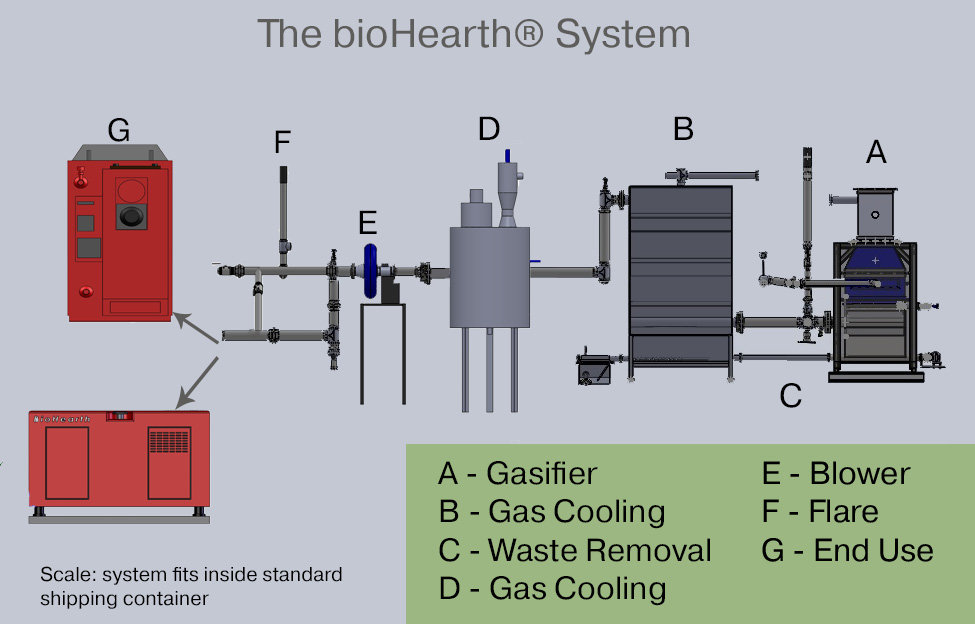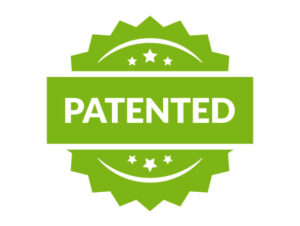
Innovating Towards Sustainability: Waste to Energy System Secures Patent for Downdraft Gasification
In a world where the need for sustainable energy solutions is more pressing than ever, innovation plays a pivotal role in driving change. Recently, a breakthrough in renewable energy technology has captured attention as Waste to Energy Systems, LLC has successfully secured a patent for their downdraft gasification system, the bioHearth® . This milestone represents a significant leap forward in the quest for cleaner, more efficient ways to convert waste into valuable energy resources.
 The Birth of a Game-Changing Technology: The journey towards the development of this patented downdraft gasification system began with a vision to address two pressing challenges: waste management and energy generation. Traditional waste disposal methods, such as landfilling or incineration, come with significant environmental drawbacks, including pollution and greenhouse gas emissions. Conversely, renewable energy sources offer a promising avenue for reducing reliance on fossil fuels and combating climate change. The marriage of these two objectives gave rise to the innovative concept of waste to energy through gasification.
The Birth of a Game-Changing Technology: The journey towards the development of this patented downdraft gasification system began with a vision to address two pressing challenges: waste management and energy generation. Traditional waste disposal methods, such as landfilling or incineration, come with significant environmental drawbacks, including pollution and greenhouse gas emissions. Conversely, renewable energy sources offer a promising avenue for reducing reliance on fossil fuels and combating climate change. The marriage of these two objectives gave rise to the innovative concept of waste to energy through gasification.
Understanding Downdraft Gasification: At the heart of this patented technology lies the process of downdraft gasification—a thermochemical conversion process that transforms organic waste materials into a clean-burning fuel known as producer gas. Unlike traditional incineration, which involves the combustion of waste in the presence of oxygen, gasification occurs in a low-oxygen environment, minimizing emissions and producing a producer gas rich in hydrogen and carbon monoxide. This producer gas can then be utilized for electricity generation, heat production, or the synthesis of biofuels, offering a versatile and sustainable energy solution.
The Significance of Securing a Patent: Securing a patent for the bioHearth® downdraft gasification system represents a major achievement for Waste to Energy Systems. Not only does it validate their pioneering efforts in waste to energy conversion, but it also provides them with a competitive advantage in the burgeoning clean energy market. With intellectual property protection in place, Waste to Energy Systems can safeguard their innovation, attract investment, and establish themselves as leaders in the field. Moreover, the patent serves as a testament to the potential of waste to energy systems to drive positive change and promote environmental sustainability on a global scale.
Implications for Waste Management and Renewable Energy: The successful patenting of this downdraft gasification system holds immense promise for revolutionizing waste management practices and advancing the transition towards renewable energy sources. By offering a viable alternative to landfilling and incineration, the technology enables the efficient conversion of organic waste into valuable energy resources, reducing reliance on fossil fuels and mitigating environmental impact. Moreover, the scalability and adaptability of gasification systems make them suitable for a wide range of applications, from municipal solid waste to agricultural residues and biomass.
Looking Ahead: As we look ahead to the future, the patented downdraft gasification system represents a beacon of hope in the quest for sustainable energy solutions. By harnessing the power of innovation, this technology has the potential to transform waste into a valuable asset, driving economic growth, environmental stewardship, and energy security. As more companies and stakeholders embrace the principles of circular economy and renewable energy, we can aspire to a world where waste is no longer seen as a burden but rather as a source of opportunity and innovation.




